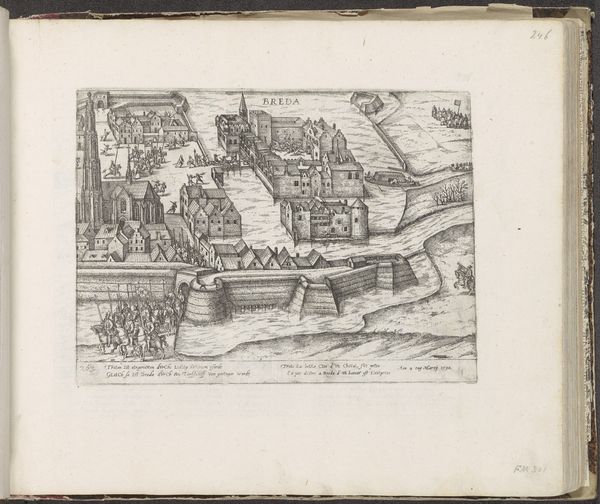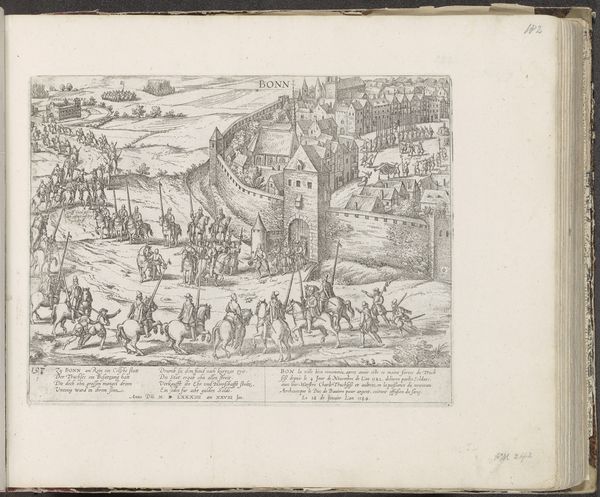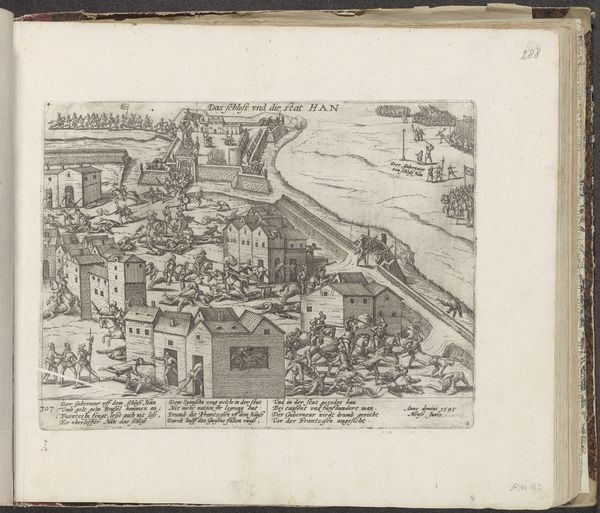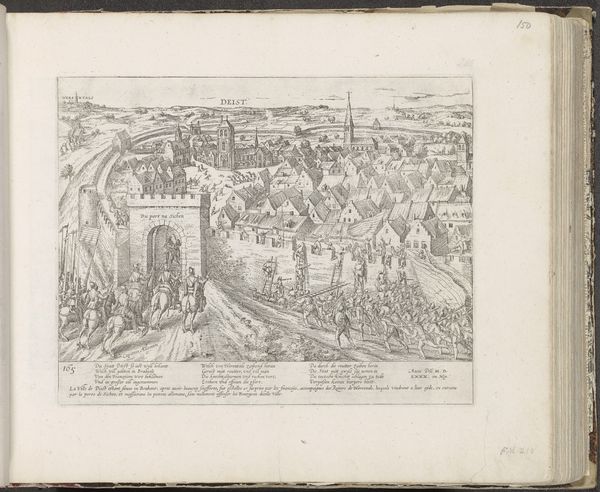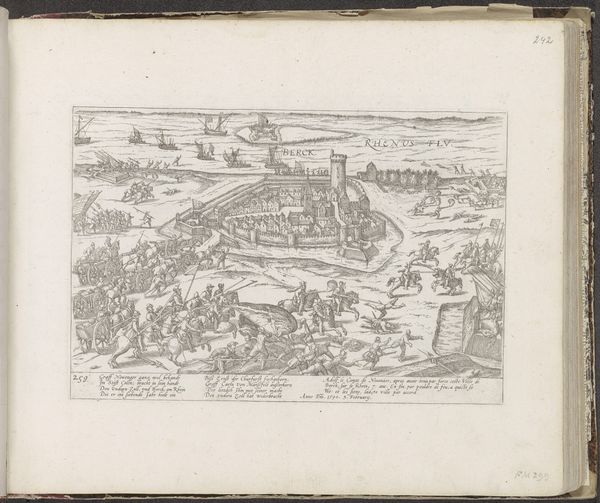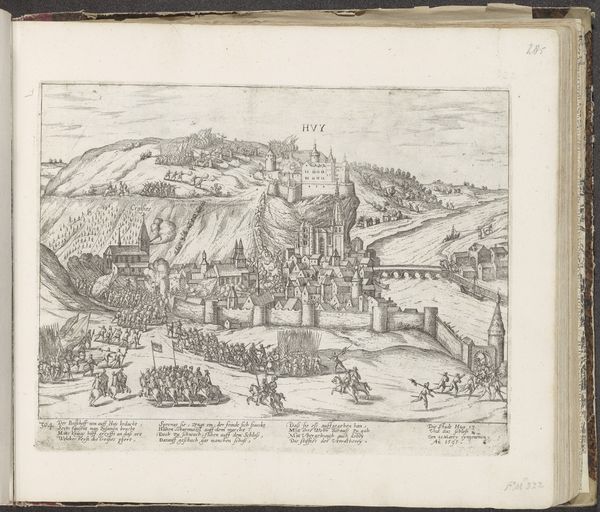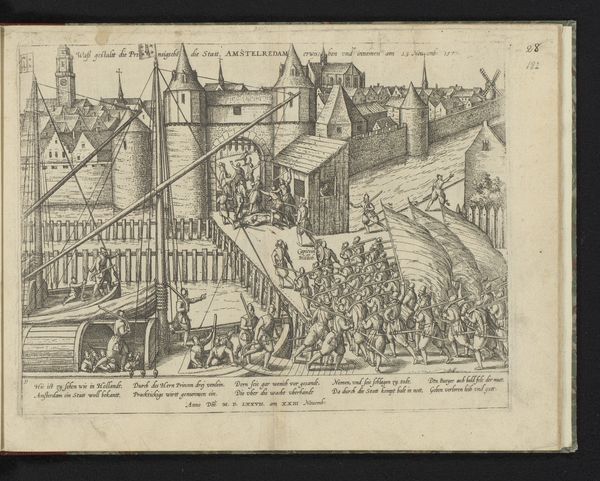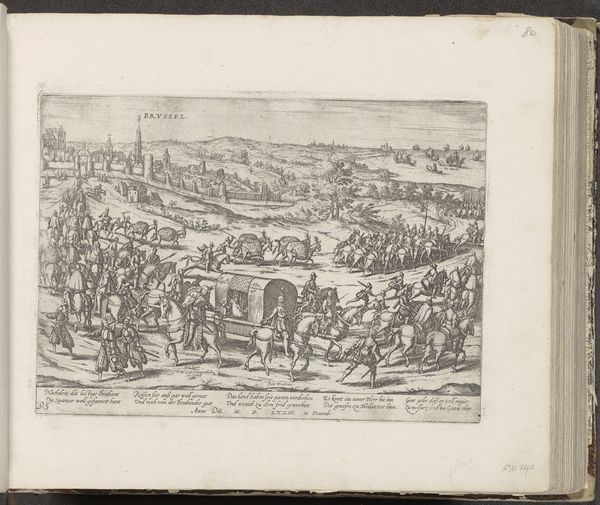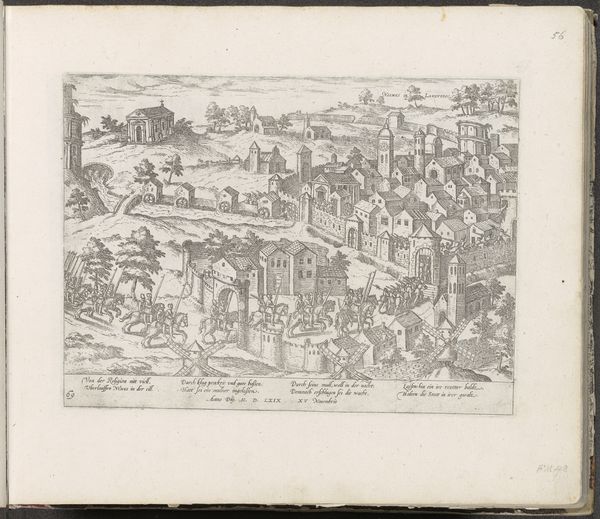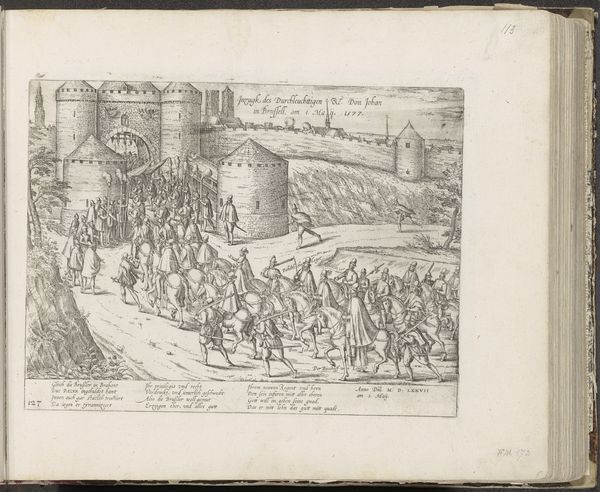
print, engraving
# print
#
landscape
#
cityscape
#
northern-renaissance
#
engraving
Dimensions: height 213 mm, width 277 mm
Copyright: Rijks Museum: Open Domain
Curator: Welcome. The piece before us, titled "Verdrinking van twee predikanten te Bonn, 1584," or "Drowning of Two Preachers in Bonn, 1584," is attributed to Frans Hogenberg, dating from around 1587 to 1591. It's currently held in the collection of the Rijksmuseum, and it exemplifies Northern Renaissance printmaking through its use of engraving. Editor: My first impression is dominated by the dense linework. It creates this incredibly textured, almost restless surface, a kind of agitated, busy feel. The stark contrast evokes a mood that seems equally dramatic and meticulous. Curator: Indeed. Hogenberg was a prolific engraver, particularly known for his role in creating cityscapes and historical chronicles. His prints offer insight into 16th-century political and religious upheavals in Europe, providing a lens into the production and circulation of information during the Reformation. The stark nature of the lines lends itself perfectly to the efficient reproduction of text alongside images. Editor: I’m drawn to the interplay between the orderly city depicted and the chaotic drowning scene in the foreground. The rigid lines that define the architecture contrast sharply with the swirling water, which is itself a masterclass in creating depth through varying line density. The composition leads your eye, even against the macabre, with the use of formal elements, such as placement. Curator: The very subject matter makes it a powerful piece. Here we see, likely portrayed for propagandistic purposes, a highly fraught moment connected with the history of religious conflict within the locale of Bonn. Understanding the dynamics of that period makes us think of the artwork itself as a site for production and dissemination of very charged, timely messages. Editor: From a purely aesthetic perspective, consider how the artist uses the water element, visually bisecting the lower register and adding both motion and metaphorical weight to the print's narrative. There's also an almost map-like quality here with an accurate representation of the architectural and urban design. Curator: That’s right. Prints like these offer glimpses into the urban fabric and its populace. Here, the choice of the medium also highlights accessibility; prints were comparatively cheaper than paintings, enabling these to reach broader audiences and impacting social discourse. Editor: Reflecting on the impact of engravings from this era really underscores the ability to record scenes of historical significance through very fine lines—a fascinating blend of artistic interpretation and documentation. Curator: Precisely. This single image captures complex historical realities and material production qualities of its time, encapsulating both political significance and craftsmanship, indeed a potent combination!
Comments
No comments
Be the first to comment and join the conversation on the ultimate creative platform.
